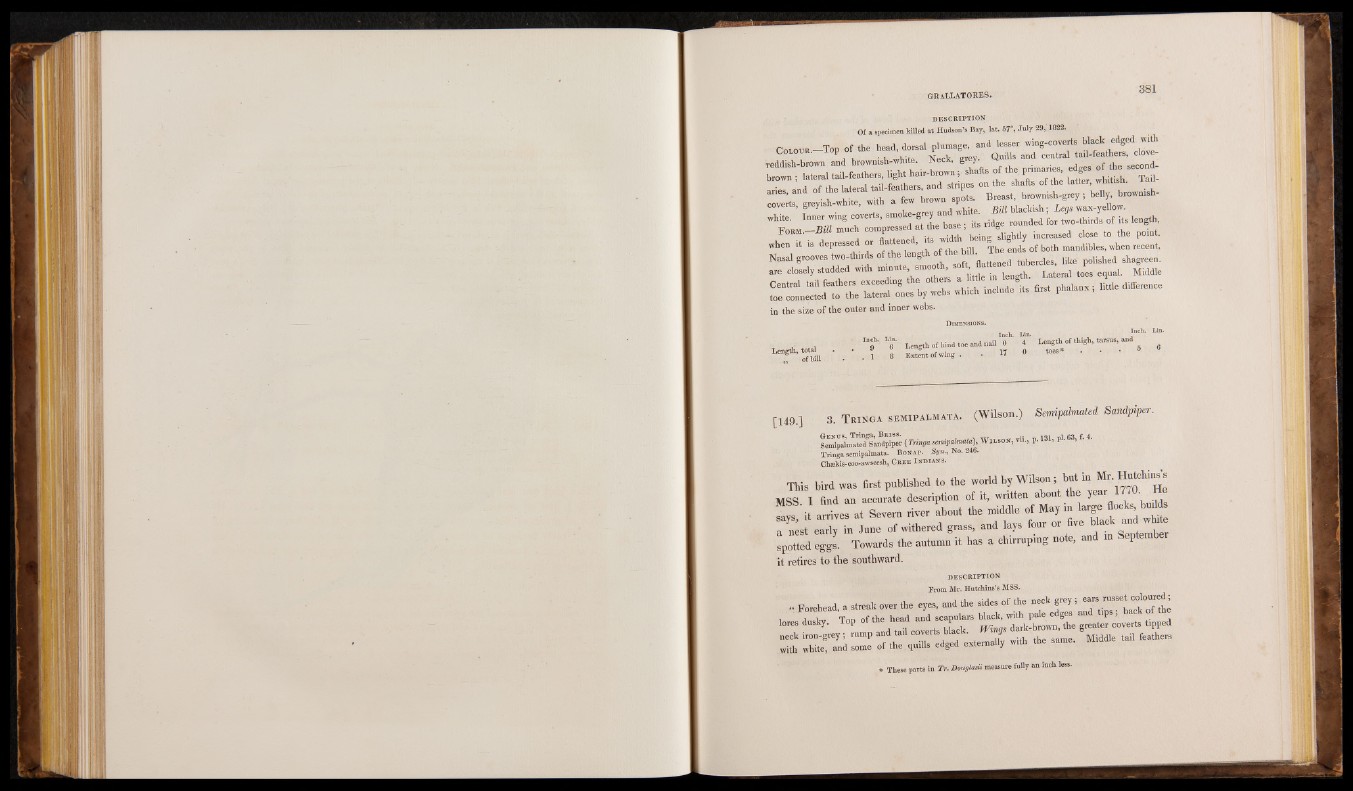
GRaLLâTORES.
d e s c r ip t io n
Of a specimen killed at Hudson’s Bay, lat. 57°, July 29, 1822.
C o u m a -T o p of the head, dorsal plumage, and lesser wing-coverts black _edged^ with
reddish-brown and brownish-white. Neck, grey. Quills and
white ’ Inner wing coverts, smoke-grey and white., „ Bill blackish; Legs *o*M .-B ill much compressejd .aj.t he ht easep ,• idtss nrid g8e roundgeda fgor gtwio -|thgirds too f gits| l epnogitnht,
when it is depressed or a ene , mandibles, when recent,
M H f f l H H ■ H in the size of the outer and inner webs.
Dimensions. . . r, Inch. Lin. .Inch. Lin. i ,| I , ‘ lDf 6°' LengthofMndtoeandnail 0 4 Length of thigh, tarsus, and
‘ S h ill 1 8 B i t of w ing. • 17 0 »es* . . . 8, 6
[149.] 3. T r i n g a s e m i p a l m a t a . (Wilson.) Semipalmated Sandpiper.
S i t e d 8? » H R B W i r s c , m 1 1 3 1 ,1 6 3 ,1 4 .
Tringa semipalmata. B on ap. Syn., No. 246.
Chækis-coo-awscesh, Cb e e I ndians.
This bird was first published to the world by Wilson ; but i n > H - ^
MSS. I find an accurate description of it, written about the U A J
7avs it arrives at Severn river about the middle of May m Urge flock/budds
a l i t early in June of withered grass, and lays four or five black and w
spotted eggs. Towards the autumn it has a chirruping note, and in September
it retires to the southward.
DESCRIPTION
From Mr. Hutchins’s MSS.
li ores ad usky. TToonp ooft tthhee hUe ad and scapulars black, wditahr kp-ablreo wedng, eths e greatepr c>overts tipped
These parts in Tr. Dmglasii measure fully an Inch less.